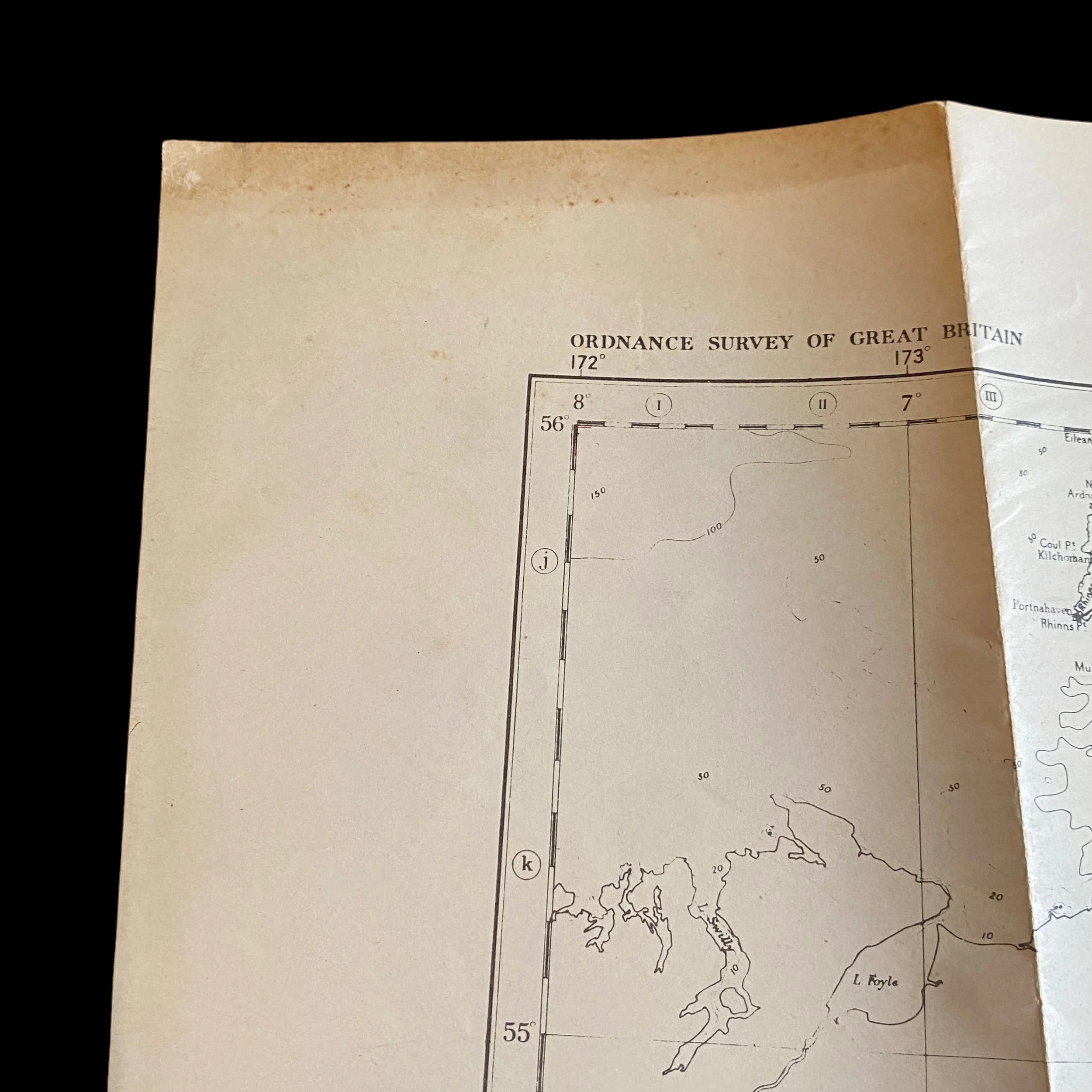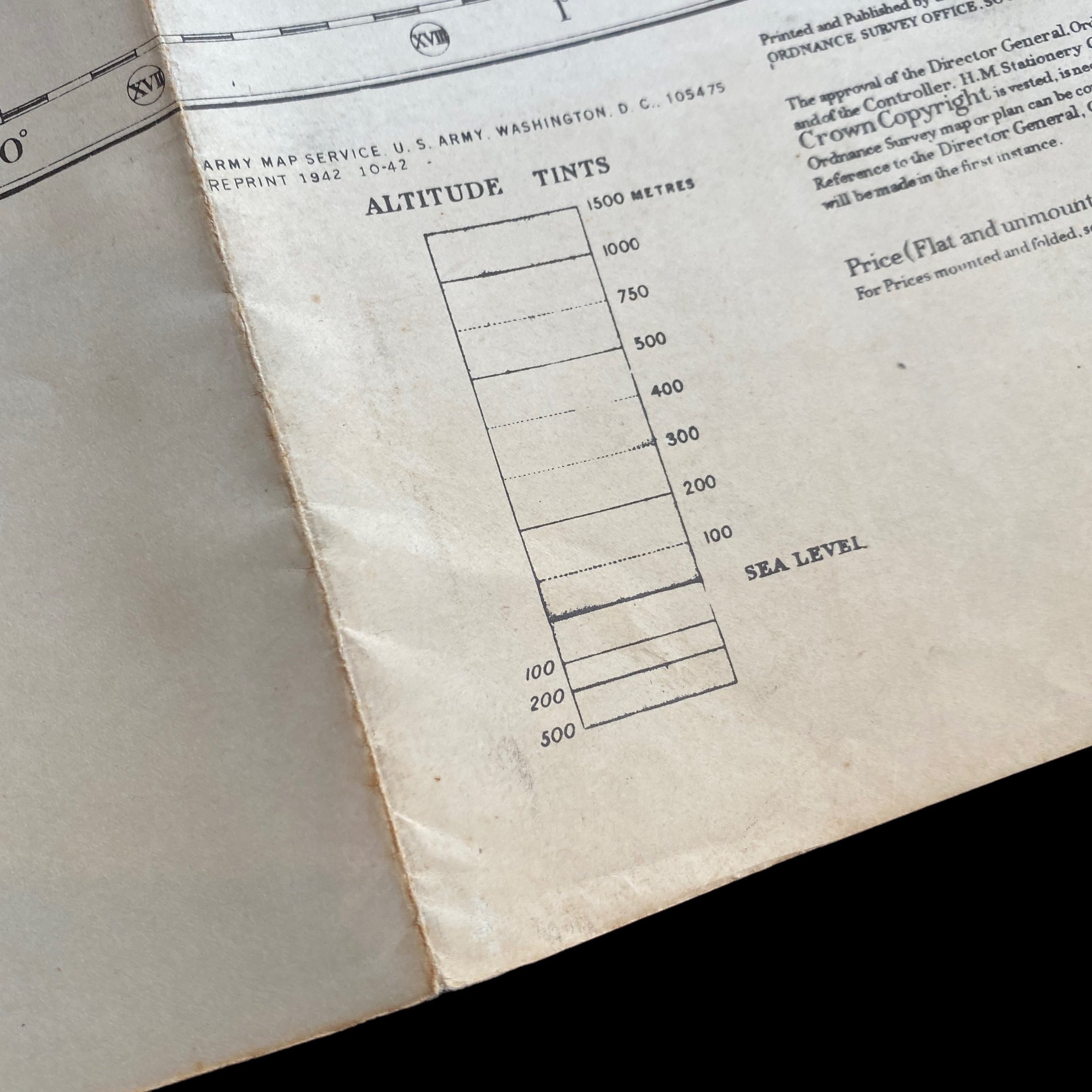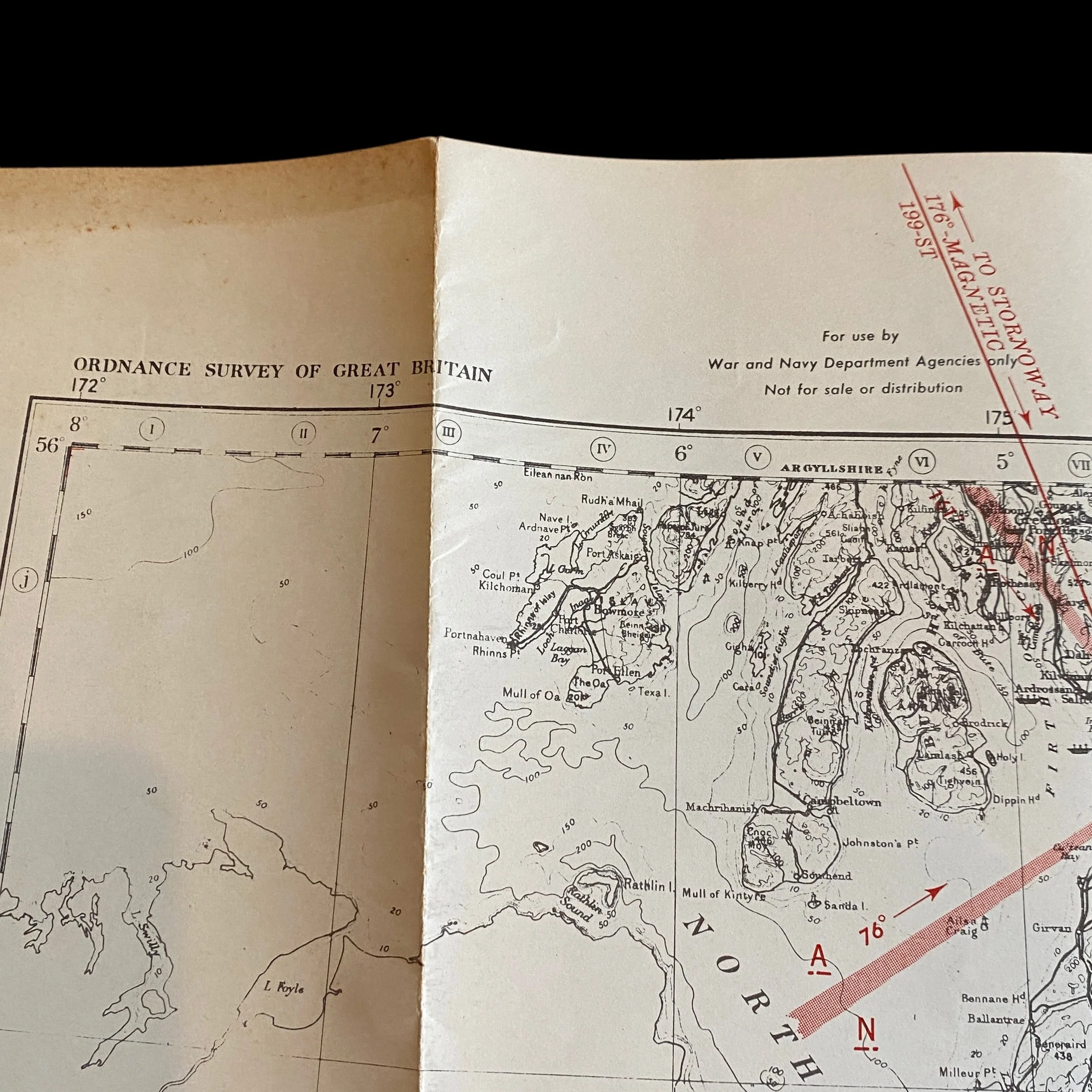Early WWII 1942 U.S. Army “CONFIDENTIAL” Allied Ordinance Survey of Great Britain Map















































Early WWII 1942 U.S. Army “CONFIDENTIAL” Allied Ordinance Survey of Great Britain Map
Comes with a hand-signed C.O.A.
This rare and museum-grade early WWII artifact is an original 1942 dated U.S. Army “CONFIDENTIAL” Ordinance Survey of Great Britain This map is extremely detailed and shows the entire span of Great Britain and its roads, towns and cities.
The entry of the United States Army into Great Britain during World War II marked a pivotal moment in the Allied effort against the Axis powers. As the conflict escalated, Britain stood as a bastion of resistance against Nazi Germany's aggression, and the arrival of American forces in 1942 further solidified the alliance between the two nations.
By 1942, World War II had engulfed much of Europe, with Nazi Germany dominating large swathes of territory. Great Britain, having endured the Blitz and repelled German invasion attempts during the Battle of Britain, stood as a resilient beacon of defiance against Hitler's regime. However, Britain's resources were strained, and the need for additional Allied support became increasingly evident. Recognizing the importance of bolstering Britain's defenses and launching a counteroffensive against the Axis powers, the United States made the strategic decision to deploy its military forces to the British Isles.
The deployment of U.S. forces to Great Britain in 1942 was a multifaceted endeavor that involved extensive planning and coordination between the two nations. Operation Bolero, initiated in early 1942, was the codename for the massive logistical operation aimed at transporting American troops, equipment, and supplies across the Atlantic Ocean to British shores. This operation, facilitated by the combined efforts of the U.S. Navy, Merchant Marine, and Royal Navy, involved the convoying of troops and matériel aboard ships vulnerable to German U-boat attacks.
Upon arrival in Great Britain, American forces were integrated into existing Allied command structures, with General Dwight D. Eisenhower assuming leadership as Supreme Commander of the Allied Expeditionary Force. The U.S. Army's presence in Great Britain signaled a significant shift in the balance of power within the Allied coalition, as American manpower, industrial capacity, and resources bolstered Britain's capacity to wage war against the Axis.
The role of the U.S. Army in Great Britain during the period from 1942 through 1945 was multifaceted and evolved in response to changing strategic objectives and battlefield dynamics. Initially, American forces focused on training, acclimatization to European theater conditions, and integration with British and other Allied units. The British provided invaluable guidance and assistance to their American counterparts, sharing their expertise in tactics, logistics, and operational planning.
As preparations for the invasion of Nazi-occupied Western Europe gained momentum, Great Britain served as the primary staging ground for Allied operations. American troops stationed in Britain played a pivotal role in the planning and execution of major campaigns, including the North African and Italian campaigns, which aimed to weaken Axis forces and create favorable conditions for the eventual invasion of France.
Furthermore, U.S. Army Air Forces stationed in Great Britain conducted strategic bombing raids against German industrial and military targets, contributing to the erosion of Germany's war-making capabilities and paving the way for the eventual Allied victory. The Eighth Air Force, based in England, conducted daylight bombing raids over Europe, facing formidable opposition from German Luftwaffe fighters and anti-aircraft defenses but inflicting significant damage on enemy infrastructure and morale.
In addition to their combat duties, American soldiers stationed in Great Britain played a vital role in strengthening diplomatic ties between the United States and its British allies. Through interactions with local communities, joint training exercises, and cultural exchanges, American servicemen forged enduring bonds of friendship and camaraderie with their British counterparts, fostering a spirit of cooperation and mutual respect that would endure long after the war's end.
The U.S. Army's entry into Great Britain during World War II had far-reaching implications for the course and outcome of the conflict. By bolstering Britain's defenses and providing critical logistical support, American forces helped to sustain Allied resistance against Axis aggression and lay the groundwork for the liberation of Europe. The cooperation and coordination between American and British military forces in Great Britain exemplified the strength of the Anglo-American alliance and set a precedent for future collaborations in the post-war era.
Moreover, the experience of serving in Great Britain left an indelible mark on the thousands of American soldiers who participated in the campaign. Many veterans fondly recalled their time in Britain, cherishing memories of camaraderie, hospitality, and shared sacrifice amidst the crucible of war. The enduring bonds forged between American and British servicemen served as a testament to the spirit of solidarity and unity that characterized the Allied effort against tyranny and oppression.
The U.S. Army's entry into Great Britain during World War II represented a watershed moment in the conflict, signaling the deepening of Allied cooperation and the commitment of the United States to the defeat of Nazi Germany and its allies. From 1942 through 1945, American forces stationed in Great Britain played a crucial role in preparing for and executing major military campaigns, contributing to the eventual victory of the Allied powers. The legacy of their service endures as a testament to the enduring bonds of friendship and shared sacrifice forged in the crucible of war.